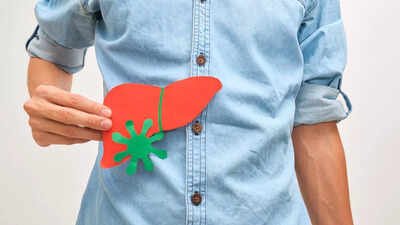What happens to your body when you don’t exercise regularly: 7 ways inactivity affects your health |

Modern lifestyles often involve long hours of sitting at desks, in cars, or in front of screens, leaving little room for regular movement. However, a lack of physical activity can silently harm the body in multiple ways. When we move less, our metabolism slows, calories go unused, and fat begins to accumulate, leading to gradual weight gain. Over time, this sedentary behaviour affects not only our weight but also heart function, bone strength, and mental well-being. Inactivity has been linked to chronic conditions such as diabetes, high blood pressure, and cardiovascular disease, as well as poor posture and low mood. Even small changes, like taking the stairs or walking daily, can make a remarkable difference in maintaining health, strength, and longevity.
7 harmful effects of lack of exercise on your body and mind
According to a study published in PubMed Central, lack of regular physical activity is strongly linked to an increased risk of premature death and chronic diseases. The research highlights that sedentary individuals face a significantly higher likelihood of developing cardiovascular conditions, obesity, type 2 diabetes, and even certain cancers compared to those who engage in regular exercise. The study found that prolonged inactivity leads to metabolic dysfunction, poor circulation, and reduced insulin sensitivity, all of which contribute to early mortality.
Inactivity puts your heart at risk
The heart is a muscle that needs regular exercise to stay strong and efficient. When you lead a sedentary lifestyle, your heart doesn’t pump blood as effectively, leading to sluggish circulation and higher blood pressure. Over time, cholesterol and fatty deposits can build up in the arteries, narrowing them and increasing the risk of heart attack or stroke. Physical inactivity also reduces levels of good HDL cholesterol, which helps remove bad LDL cholesterol from the bloodstream. Regular exercise keeps the cardiovascular system active, supporting oxygen flow and maintaining healthy blood vessels.
Muscles weaken and bones lose strength
Without regular movement, muscles begin to shrink and lose tone, a process called muscle atrophy. Weak muscles not only reduce your physical strength but also put extra pressure on your joints and spine. Similarly, bones rely on weight-bearing activities like walking, running, or resistance training to stay dense and strong. Inactivity accelerates bone loss, raising the risk of osteoporosis and fractures, especially in older adults. The result is stiffness, poor balance, and a higher chance of injury during daily activities.
Blood sugar levels rise without regular activity
Exercise plays a major role in regulating blood sugar because it helps your cells absorb glucose for energy. When you remain inactive, your muscles don’t use as much glucose, causing it to stay in the bloodstream. This leads to higher blood sugar levels and reduced insulin sensitivity over time. Persistent inactivity can eventually cause insulin resistance, a condition that greatly increases the risk of developing type 2 diabetes. Regular physical activity, even light walking, helps stabilise glucose levels and improve metabolic health.
Lack of exercise affects mood and mental health
Movement is not just about physical health; it’s also essential for emotional well-being. Exercise triggers the release of endorphins, serotonin, and dopamine, brain chemicals that promote happiness and reduce stress. When you’re inactive, these mood-boosting hormones decrease, leaving you more vulnerable to anxiety, irritability, and depression. Additionally, a sedentary lifestyle can disturb sleep patterns and increase fatigue, making it harder to stay motivated and focused. Regular activity, even in small amounts, can significantly improve mental clarity, confidence, and emotional stability.
A sedentary lifestyle weakens the immune system
Physical activity improves circulation, helping immune cells move freely throughout the body to detect and fight infections. When you don’t exercise, blood flow slows down, and immune response becomes less efficient. Over time, this can make you more prone to catching colds, viruses, and other infections. Chronic inactivity can also increase inflammation in the body, weakening your defenses even further. Regular exercise helps strengthen immunity by supporting the production of antibodies and reducing stress hormones that suppress immune function.
Sitting too long causes posture problems and back pain
Extended sitting, especially with poor posture, weakens the muscles that support your spine. Over time, this imbalance can cause tension in the neck, shoulders, and lower back. A sedentary lifestyle also leads to tight hip flexors and weak abdominal muscles, both of which contribute to chronic back pain. Moreover, slouching while using digital devices can cause a “tech neck,” resulting in discomfort and long-term alignment issues. Incorporating stretching, short walks, and core exercises throughout the day can help relieve stiffness and prevent posture-related problems.
Inactivity can shorten your lifespan
Numerous studies show that physically inactive people face a higher risk of premature death compared to those who exercise regularly. Lack of movement contributes to obesity, heart disease, diabetes, and certain cancers, all of which can shorten lifespan. Physical activity helps maintain optimal heart, lung, and brain function, all essential for long-term health and vitality. Even moderate daily movement, such as brisk walking or cycling, can significantly lower mortality risk and enhance quality of life as you age.Disclaimer: This article is for general informational purposes only and is not a substitute for professional medical advice, diagnosis, or treatment. Always seek the guidance of a qualified healthcare provider regarding any medical condition or lifestyle change.Also Read: Feeling breathless when walking short distances: 8 possible health reasons
var _mfq = window._mfq || [];
_mfq.push([“setVariable”, “toi_titan”, window.location.href]);
!(function(f, b, e, v, n, t, s) {
function loadFBEvents(isFBCampaignActive) {
if (!isFBCampaignActive) {
return;
}
(function(f, b, e, v, n, t, s) {
if (f.fbq) return;
n = f.fbq = function() {
n.callMethod ? n.callMethod(…arguments) : n.queue.push(arguments);
};
if (!f._fbq) f._fbq = n;
n.push = n;
n.loaded = !0;
n.version = ‘2.0’;
n.queue = [];
t = b.createElement(e);
t.async = !0;
t.defer = !0;
t.src = v;
s = b.getElementsByTagName(e)[0];
s.parentNode.insertBefore(t, s);
})(f, b, e, ‘https://connect.facebook.net/en_US/fbevents.js’, n, t, s);
fbq(‘init’, ‘593671331875494’);
fbq(‘track’, ‘PageView’);
};
function loadGtagEvents(isGoogleCampaignActive) {
if (!isGoogleCampaignActive) {
return;
}
var id = document.getElementById(‘toi-plus-google-campaign’);
if (id) {
return;
}
(function(f, b, e, v, n, t, s) {
t = b.createElement(e);
t.async = !0;
t.defer = !0;
t.src = v;
t.id = ‘toi-plus-google-campaign’;
s = b.getElementsByTagName(e)[0];
s.parentNode.insertBefore(t, s);
})(f, b, e, ‘https://www.googletagmanager.com/gtag/js?id=AW-877820074’, n, t, s);
};
function loadSurvicateJs(allowedSurvicateSections = []){
const section = window.location.pathname.split(‘/’)[1]
const isHomePageAllowed = window.location.pathname === ‘/’ && allowedSurvicateSections.includes(‘homepage’)
const ifAllowedOnAllPages = allowedSurvicateSections && allowedSurvicateSections.includes(‘all’);
if(allowedSurvicateSections.includes(section) || isHomePageAllowed || ifAllowedOnAllPages){
(function(w) {
function setAttributes() {
var prime_user_status = window.isPrime ? ‘paid’ : ‘free’ ;
var geoLocation = window?.geoinfo?.CountryCode ? window?.geoinfo?.CountryCode : ‘IN’ ;
w._sva.setVisitorTraits({
toi_user_subscription_status : prime_user_status,
toi_user_geolocation : geoLocation
});
}
if (w._sva && w._sva.setVisitorTraits) {
setAttributes();
} else {
w.addEventListener(“SurvicateReady”, setAttributes);
}
var s = document.createElement(‘script’);
s.src=”https://survey.survicate.com/workspaces/0be6ae9845d14a7c8ff08a7a00bd9b21/web_surveys.js”;
s.async = true;
var e = document.getElementsByTagName(‘script’)[0];
e.parentNode.insertBefore(s, e);
})(window);
}
}
window.TimesApps = window.TimesApps || {};
var TimesApps = window.TimesApps;
TimesApps.toiPlusEvents = function(config) {
var isConfigAvailable = “toiplus_site_settings” in f && “isFBCampaignActive” in f.toiplus_site_settings && “isGoogleCampaignActive” in f.toiplus_site_settings;
var isPrimeUser = window.isPrime;
var isPrimeUserLayout = window.isPrimeUserLayout;
if (isConfigAvailable && !isPrimeUser) {
loadGtagEvents(f.toiplus_site_settings.isGoogleCampaignActive);
loadFBEvents(f.toiplus_site_settings.isFBCampaignActive);
loadSurvicateJs(f.toiplus_site_settings.allowedSurvicateSections);
} else {
var JarvisUrl=”https://jarvis.indiatimes.com/v1/feeds/toi_plus/site_settings/643526e21443833f0c454615?db_env=published”;
window.getFromClient(JarvisUrl, function(config){
if (config) {
const allowedSectionSuricate = (isPrimeUserLayout) ? config?.allowedSurvicatePrimeSections : config?.allowedSurvicateSections
loadGtagEvents(config?.isGoogleCampaignActive);
loadFBEvents(config?.isFBCampaignActive);
loadSurvicateJs(allowedSectionSuricate);
}
})
}
};
})(
window,
document,
‘script’,
);
Source link




